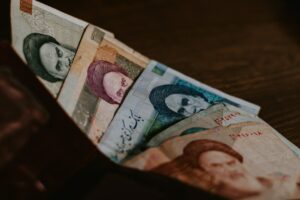The Importance of Risk Management: How Much Money Should You Risk When Starting Forex Trading?
Forex trading, also known as foreign exchange trading, is a popular investment option for many individuals. With its high liquidity and potential for significant profits, it has attracted a large number of participants from around the world. However, like any investment, forex trading comes with its own set of risks. This is why risk management is crucial for anyone looking to venture into the world of forex trading.
Risk management in forex trading refers to the strategies and techniques used to minimize potential losses and protect capital. It involves analyzing and understanding the risks involved in trading, setting appropriate risk levels, and implementing measures to mitigate those risks. Without a proper risk management plan, traders expose themselves to unnecessary and potentially devastating losses.
One of the key aspects of risk management in forex trading is determining how much money to risk on each trade. This decision is crucial as it can significantly impact a trader’s overall profitability and long-term success. Risking too much capital on a single trade can lead to quick and substantial losses, while risking too little can limit potential profits.
So, how much money should you risk when starting forex trading? The answer to this question depends on several factors, including your risk tolerance, trading strategy, and overall financial situation. Here are some guidelines to help you determine an appropriate risk level:
1. Risk Tolerance: Before deciding how much money to risk, it is essential to assess your risk tolerance. Risk tolerance refers to your ability to handle potential losses. If you have a high-risk tolerance, you may be comfortable risking a larger portion of your capital on each trade. On the other hand, if you have a low-risk tolerance, you may prefer to risk a smaller percentage of your capital.
2. Trading Strategy: Your trading strategy plays a significant role in determining your risk level. Different strategies have varying levels of risk associated with them. For example, a day trader who aims to profit from short-term price fluctuations may choose to risk a smaller percentage of their capital on each trade. In contrast, a swing trader who holds positions for several days or weeks may be willing to risk a larger percentage.
3. Financial Situation: Your current financial situation also plays a role in determining how much money to risk. If you have a substantial amount of capital available, you may be able to risk a higher percentage without jeopardizing your overall financial well-being. However, if you have limited capital, it is crucial to be more conservative in your risk-taking.
Once you have considered these factors, you can determine an appropriate risk level for your forex trading. A commonly recommended risk level is to risk no more than 1-2% of your trading capital on each trade. This means that if you have $10,000 in your trading account, you should risk no more than $100-$200 on any single trade.
By adhering to this risk management rule, you ensure that even if you experience a series of losing trades, your overall account balance will not be severely impacted. This allows you to preserve capital and continue trading without significant setbacks.
It is important to note that risk management is an ongoing process. As your trading experience grows and your financial situation changes, you may need to adjust your risk levels accordingly. Regularly reviewing and reassessing your risk management plan is crucial to adapt to evolving market conditions and personal circumstances.
In conclusion, risk management is a vital aspect of forex trading. Determining how much money to risk on each trade requires careful consideration of your risk tolerance, trading strategy, and financial situation. By following appropriate risk management guidelines and sticking to your predetermined risk levels, you can minimize potential losses and increase your chances of long-term success in forex trading. Remember, it is better to prioritize capital preservation and steady growth rather than chasing quick profits and exposing yourself to unnecessary risks.






